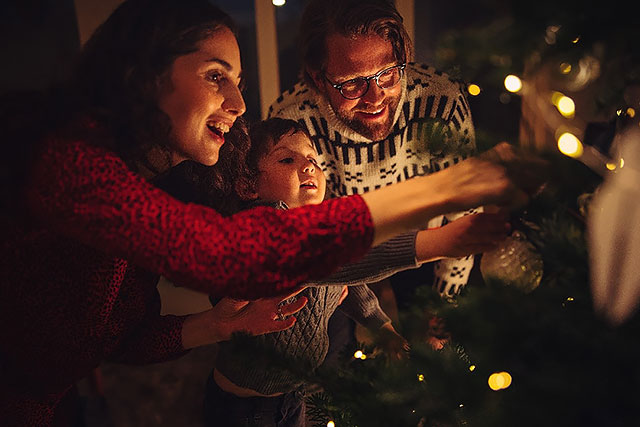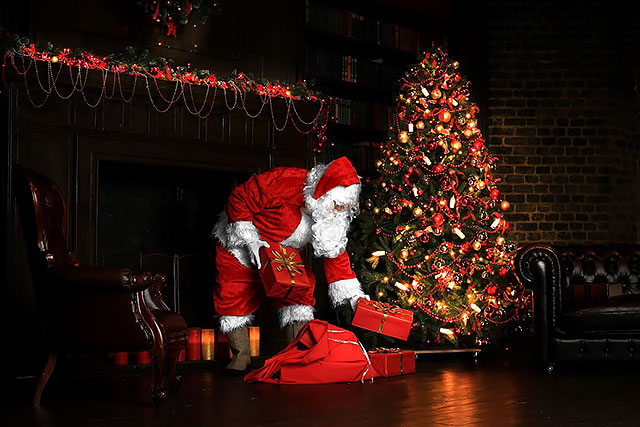Whether it's the Christmas tree, presents or the baby Jesus in the manger, all these Christmas customs are part of a typical German Christmas party. But where do these customs come from and when did they become a beautiful tradition? Furthermore, what strange and funny Christmas customs are there in other countries?
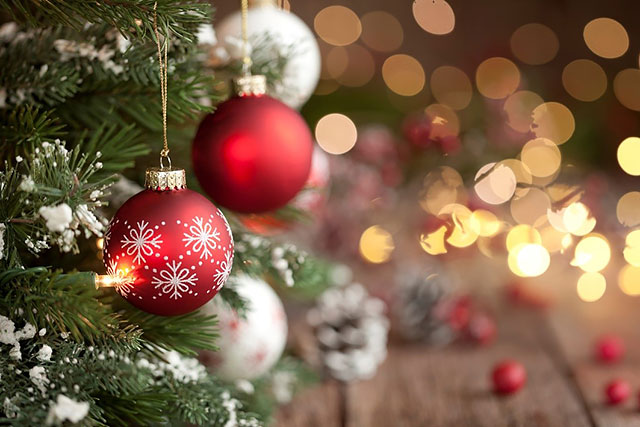
Table of contents
- Where does the Christmas tradition come from?
- What Christmas customs are there in Germany before and after Christmas?
- Advent
- St Nicholas
- Santa Claus
- Advent wreath
- Christmas tree
- Stable
- Christmas market
- Distribution of Christmas gifts
- Christmas songs
- Christmas dinner
- Advent cookies
- Three Wise Men (Epiphany)
- What curious and funny Christmas customs do other countries have?
- Poland
- Sweden
- England
- Greece
- Russia
Where does the Christmas tradition come from?
Christmas customs are recurring and characteristic traditions of the Christmas festival. The feast has its origins in the birth of Jesus, although some customs date back to ancient winter and lighter customs. Also in antiquity, the Egyptians and other cultures celebrated the birthdays of their gods on the winter solstice (21 December). Around 500 BC, the Romans commemorated the birthday of the Sun God on 25 December, while Germanic peoples celebrated a festival in July. However, the Church condemned the solstice festival as a pagan custom and forbade it. But the celebration was strongly anchored in society, so the church leaders decided to dedicate the feast to Jesus. Since then, Christians all over the world celebrate the birth of Jesus on 25 December instead of the winter solstice. As with all customs, Christmas customs differ from region to region and are subject to constant change.
What Christmas customs are there in Germany before and after Christmas?
Advent
Event (from the Latin "the coming") originated - probably in the mid-4th century - as a period of fasting and penance between St Martin's Day (11 November) and the feast of the Epiphany on 6 January, at which time the birth of Jesus was celebrated. The Advent season as we know it today, with its four Sundays before Christmas, dates back to Pope Gregory the Great (540-604). He set the number of Sundays in Advent from six to four. The liturgical year in Catholic and Protestant churches begins on the first Sunday of Advent.
St Nicholas
St Nicholas Day is celebrated on 6 December, when it is customary for children to put their boots outside the door to receive gifts. We owe this to the holy Bishop of Myra, born in Lycia (modern Turkey) in the 3rd century and baptised with the name 'Nicholas'. The name comes from the Greek and means 'victory of the people'. There are many legends about the bishop and the origin of St Nicholas Day. The day of St Nicholas' death is said to be 6 December, a day that is celebrated as a holiday in memory of his good deeds.
The legend tells of an old parent who did not have the money to marry off his daughters. To prevent them from becoming prostitutes, Nicholas helped them by leaving gold in the fireplace. They were saved from their fate by finding the gold in their socks and boots hanging out to dry. The Christmas custom of St Nicholas is therefore based on the Legend of the Virgins. This custom is renewed every year, through the story that every 6 December children wait for gifts from the chimney.
Santa Claus
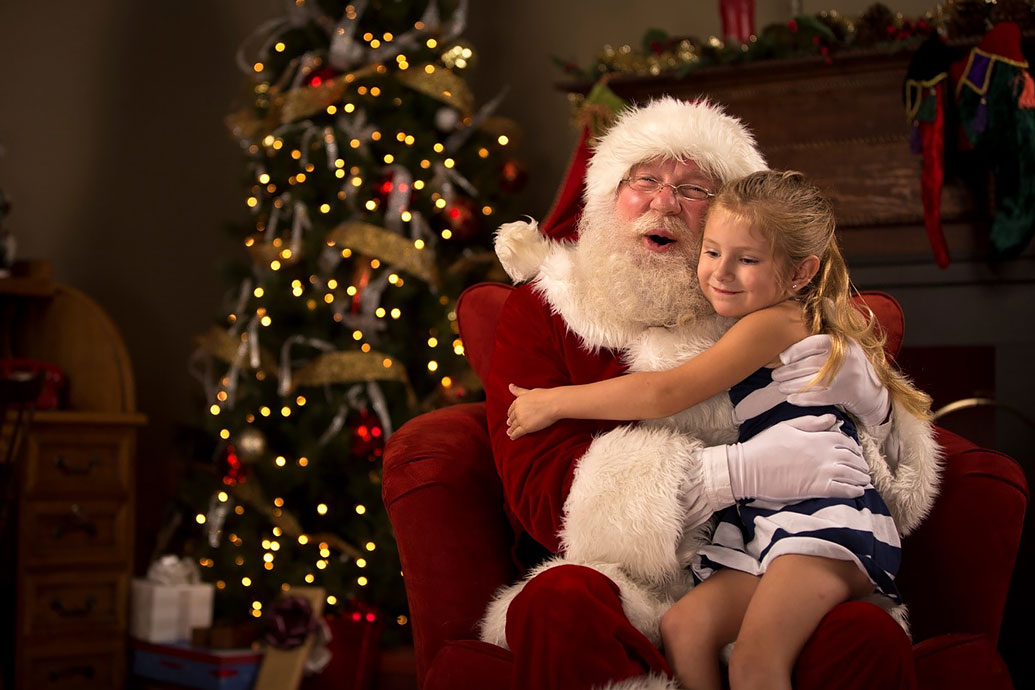 Santa Claus as gift-giver is an invention of modern times.
Santa Claus as gift-giver is an invention of modern times.Santa Claus has not existed for long, he is an invention of the modern era. In the past, St Nicholas used to bring presents on his feast day, 6 December. Children would hang up their shoes in the evening and the next morning they would find them filled with nuts, apples and sweets. There was also a custom in which St Nicholas entered the house accompanied by Knecht Ruprecht (called 'Krampus' in Austria). The historical model for Father Christmas at Christmas time is St Nicholas. But the reformer Martin Luther did not like the Catholic saint as a gift bearer and so a new Protestant gift bearer was born: the Christ Child who brought gifts on the 24th night or on the 25th of December.
However, around the 19th century, the custom of St Nicholas had not completely disappeared and alternated with the tradition of the baby Jesus. Images of the old Father Christmas cloned the model for the new Father Christmas. He is first mentioned in the song "Tomorrow comes Santa Claus" by Hoffmann von Fallersleben.
Advent wreath
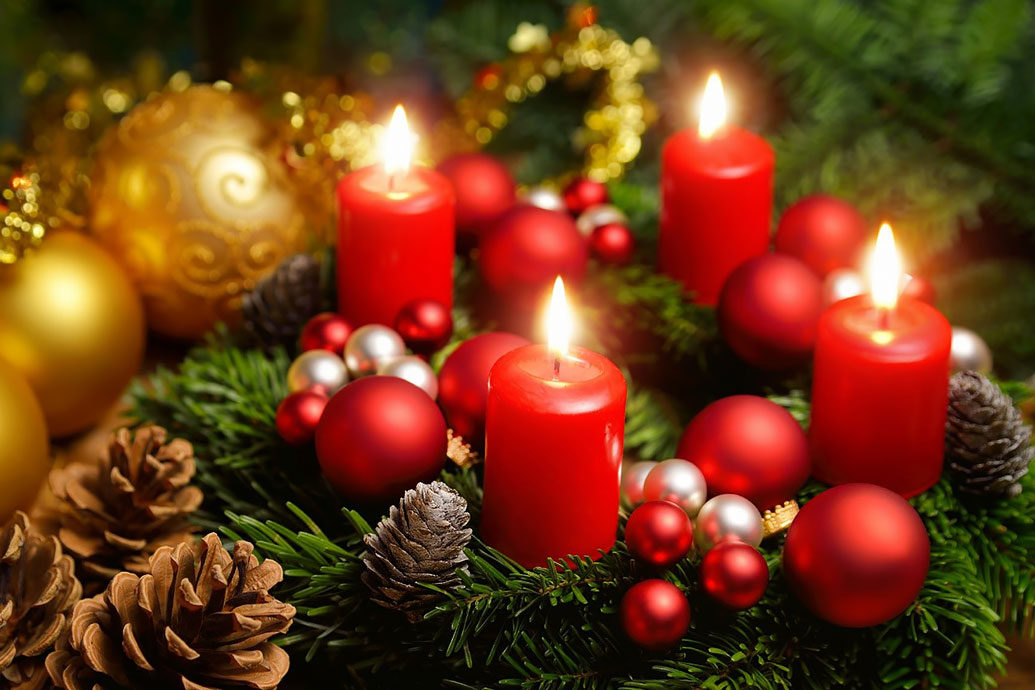 Four candles for the four Sundays of Advent - an Advent wreath shortens the time until Christmas.
Four candles for the four Sundays of Advent - an Advent wreath shortens the time until Christmas.The Advent wreath decorates many German homes in the run-up to Christmas. The Christmas custom of the Advent wreath dates back to the Protestant theologian and social educator Johann Hinrich Wichern. In the 19th century, the theologian held devotions in the 'Rauhes Haus' orphanage in Hamburg and illustrated the time up to Christmas with 24 fir-green candles and four other larger candles for Advent Sundays. Today, the Advent wreath consists of a thick fir-green wreath and four candles for decoration, one of which is lit extra every Advent Sunday.
Christmas tree
In the Middle Ages, people hung fir branches or mistletoe during the Christmas period as a sign of new life in winter. In addition, this Christmas custom was intended to scare away evil spirits. A complete Christmas tree was never mentioned until the beginning of the 15th century. It was decorated with gingerbread, nuts and apples and was located in the Freiburg Heilig-Geist-Spital. In the Middle Ages, Christmas trees were set up outdoors. The first fir trees did not enter to adorn the homes of Germans until around 1800, especially in Protestant households, as the nativity set was more important for Catholics.
Stable
On Christmas Eve, the family gathers around the nativity scene and commemorates the birth of Jesus. A nativity scene depicts the scene of this event on Christmas Eve. But where does the Christmas tradition of setting up a nativity scene come from? The origin of the nativity scene dates back to the 13th century with Francis of Assisi, who had a nativity scene built in Greccio with a live donkey and an ox and added hay. From the 16th century onwards, the Jesuits spread the nativity scene throughout Europe.
The nativity scene grew larger over time: shepherds were added, angels, the three Wise Men and the figures became smaller. In the nineteenth century it became a tradition for families to set up nativity scenes at home. Until then, they were only known from churches and home installation was only done in areas where Catholics were in the majority. In Protestant regions, the Christmas tree was the centrepiece of the decorated living room at Christmas.
By the way: In addition to the classic Christmas cribs, there are also so-called annual cribs (with other scenes from the life of Jesus) that are set up in some regions.
Nativity sets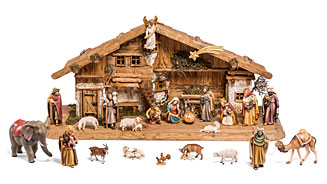 | nativity figures set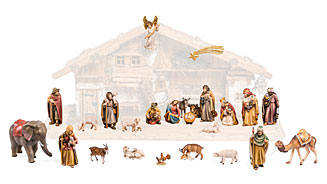 | Christmas stable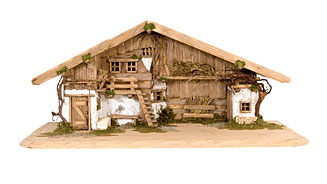 |
Christmas market
Christmas markets take place in many places in the run-up to Christmas. In the late Middle Ages, these markets were mostly sales fairs where people could buy meat and fine products for the winter season. Basket weavers, confectioners and toy makers later added to the range of products. So you could also find gifts for children, sweets and delicacies such as roasted chestnuts or nuts. The most famous Christmas markets in Germany are the Christkindlmarkt in Nuremberg and Dresden.
Distribution of Christmas gifts
Gifts were distributed on 6 December, St Nicholas Day. On Christmas Eve itself there were often no more presents. Protestants caused the custom of giving to be moved to Christmas Eve after the Reformation, as the veneration of saints is alien to the Protestant Church. According to the German Folklore Atlas, the Christ Child (mainly in the south and west) and Father Christmas (mainly in the Protestant north) brought presents in 1930.
Christmas songs
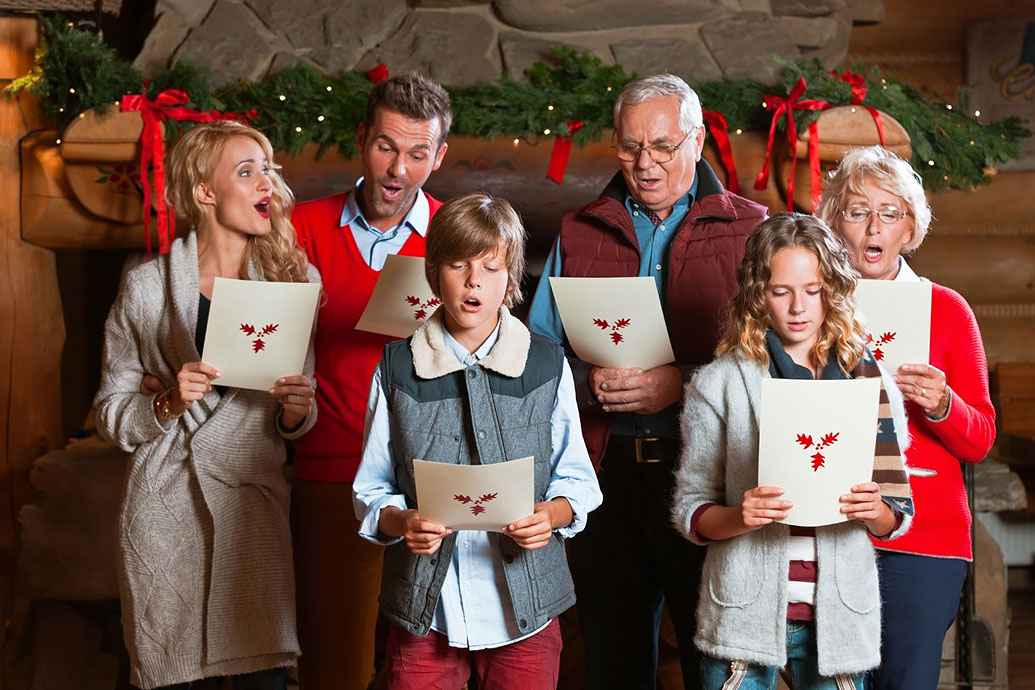 Singing Christmas carols together is a wonderful Christmas custom in many families and church congregations.
Singing Christmas carols together is a wonderful Christmas custom in many families and church congregations.What would the Christmas season be without Christmas songs? During Advent, singing carols together is a beautiful Christmas custom. In many parishes, believers also gather on Christmas Sunday and listen to the parish choirs sing the most beautiful Christmas carols.
Christmas dinner
Christmas without an elaborate family Christmas dinner with Christmas goose or carp and biscuits made especially for the Christmas season seems unthinkable. In some regions, traditionally simple dishes such as sausages with potato salad or stew are served on Christmas Eve.
Advent cookies
In many families, baking Christmas biscuits is a lovingly nurtured tradition, especially when children are part of the family. During the Advent period, baking was done before the birth of Christ. At that time, the Celts made a sacrificial bread which they hung on wires. It was a flatbread made of flour and honey that was baked on the winter solstice and was meant to protect against demons.
Three Wise Men (Epiphany)
On 6 January the Catholic Church celebrates the arrival of the Three Wise Men from the East at the Bethlehem hut. This feast day is popularly known as the 'Three Kings' or 'Day of the Three Kings'. Until the 4th century, the feast of the 'Epiphany' (the appearance of the Lord) was celebrated on 6 January. In some countries, such as Spain, Christmas presents are also received on this day and not on 24 December. Find out more about the Three Wise Kings.
What curious and funny Christmas customs do other countries have?
Now that the most important Christmas customs in Germany are known, what curious and funny Christmas customs do other countries around the world use? A brief overview:
Poland
A Polish Christmas feast includes a total of twelve courses for the months of a year and the twelve apostles of Jesus. Since people are particularly hospitable in Poland, an extra place at the table is added for an unexpected visitor. By the way: in Poland there is also the custom of putting straw under the tablecloth. Each of the invited guests pulls a stalk. The length of the pulled stalk should provide information on the expected age of the person concerned.
Sweden
While in Germany one sees programmes such as 'Kevin - Only at Home' or 'Cinderella' on television at Christmas, in Sweden Christmas is opened with a programme 'Donald Duck' in the afternoon. Furthermore, in Sweden the Christ Child does not bring presents, the so-called Julbock, a straw goat, is responsible for distributing the presents. The animal is a popular Christmas decoration in the Scandinavian country.
England
On the last Friday before Christmas Eve, the British traditionally 'let their hair down' and celebrate the so-called 'Mad Friday' with lots of alcohol on the streets. People sing, dance and have fun. In addition, the island traditionally celebrates Boxing Day on 26 December, when employees receive a gift from their employer: the Christmas box.
Greece
From 24 December to 5 January, Christmas fires burn for twelve nights in Greece to drive away evil goblins. However, the largest piece of wood is burned on Christmas night to warm the Christ child.
Russia
In Russia, Russian Orthodox Christmas is celebrated 13 days after German Christmas, i.e. on 6 January. Father Frost brings Christmas presents on New Year's Eve. Families gather around a Christmas tree and eat together.
By the way: in our magazine there are more relevant information about the history of Christmas, e.g. on the historical background of the crib, on how to place correclty the nativity figures in your crib or on the Jesus birth. Would you like to recreate the Christmas story with a nativity scene? Feel free to browse through our online shop. There you will find a wide selection of nativity figures and nativity set, high quality, handmade items with which to remember this special day.
Diritti d'autore delle immagini: immagine titolo: ©gettyimages/Liliboas, immagine 1: ©gettyimages/inhauscreative, immagine 2: ©gettyimages/Smileus, immagine 3: ©gettyimages/izusek.

